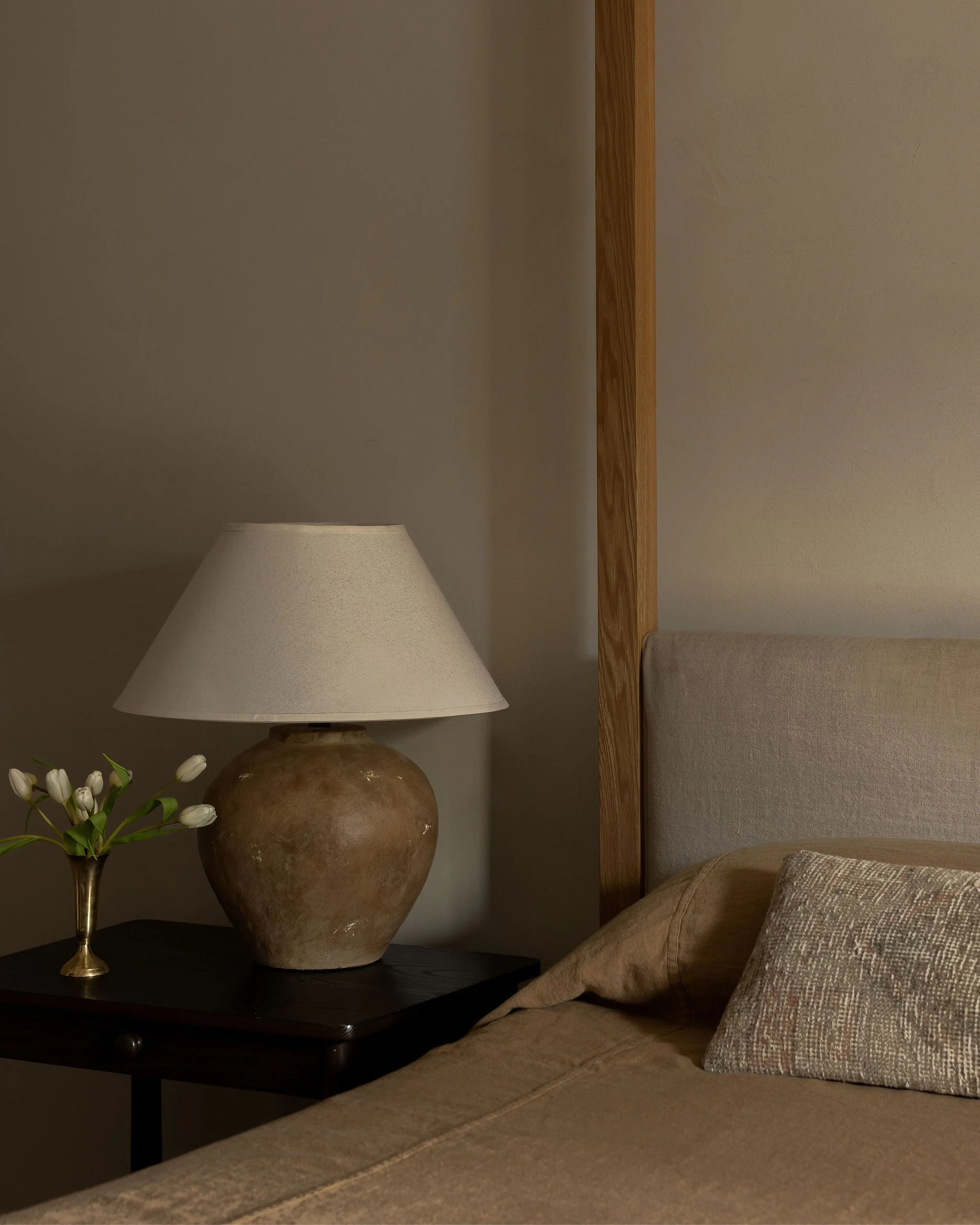Design Mistakes That Diminish Luxury (And How to Avoid Them)
Because true luxury is quiet, intentional, and deeply felt.
Luxury isn’t always what you think.
It’s not just the price tag. It’s not only the brand. And it’s never just the square footage.
True luxury whispers—it doesn’t shout. It’s found in the harmony between form and function, in spaces that breathe, and in materials that feel as good as they look.
But even the most beautiful homes can miss the mark when thoughtful design is replaced with surface-level decisions. Below are some common missteps that quietly diminish a sense of luxury—and how to design with clarity, depth, and longevity instead.
1. Confusing Flashy for Refined
Luxury brands have their place—and we love them. But when pieces are chosen just to impress, not to endure, the space can start to feel curated for attention rather than for living.
What to do instead: Prioritize makers known for craftsmanship, heritage, and quality. Choose pieces because they speak to your story, not just for their brand-name. A well-chosen designer item should elevate the space, not dominate it.
2. Ignoring Scale and Proportion
A room can have all the right elements—beautiful furnishings, refined materials, layered lighting—and still feel off. More often than not, the culprit is scale. When pieces are too large or too small for the space, they disrupt flow and make even high-end design feel unbalanced.
Luxury lives in proportion. A well-scaled room feels effortless—it invites the eye to move and the body to relax. Whether it’s a light fixture that hangs too low or a rug that doesn’t ground the room, getting the scale wrong quietly chips away at the feeling of refinement.
What to do instead: Start with a floor plan. Measure everything. Consider height, spacing, and how each piece relates to the others. And when in doubt, size up—under-scaled furnishings often make a space feel incomplete.
3. Designing Without a Narrative
A space without a story can feel disjointed, no matter how beautiful the individual elements are. When every room is treated as a standalone moment—with no thread to connect them—the home loses its sense of rhythm and cohesion.
What to do instead: Begin with a guiding narrative. Is the home meant to feel grounded? Airy? Collected over time? Use that lens to shape every decision—from finishes to flow. When a home tells a consistent story, it doesn’t just look elevated. It feels like it was always meant to be.
4. Over-Styling the Space
Luxury isn’t loud—and it certainly isn’t cluttered. One of the most common missteps in design is over-layering: too many accessories, too much texture, too many moments competing for attention. The result? A space that feels more staged than lived in.
What to do instead: Edit with intention. Let negative space bring balance. Choose fewer, better pieces—objects with texture, memory, and meaning. In luxury interiors, restraint speaks volumes.
5. Following Trends at the Expense of Timelessness
Trends are tempting. They’re fresh, exciting, and everywhere. But when a space leans too heavily on what’s popular now, it risks feeling dated just a few years—or months—down the road. Luxury isn’t trend-dependent. It’s anchored in choices that endure.
That doesn’t mean trends have no place. Used sparingly and intentionally, they can bring energy to a space. But the foundation—the architecture, the fixed finishes, the major furnishings—should speak to something deeper and longer lasting.
What to do instead: Incorporate trends where they’re easy to update: textiles, paint, lighting. Ground the space with timeless materials and classic silhouettes. Ask not just what’s beautiful today, but what will still feel beautiful in a decade.
6. Neglecting Flow and Function
A space can be visually stunning, filled with beautiful materials and thoughtfully selected furnishings—but if it’s difficult to live in, the luxury quickly wears thin. Poor layout, awkward transitions, or furniture that disrupts movement can all quietly undermine the ease that defines a truly high-end home.
True luxury feels effortless. It anticipates the way you move through your day—from the way sunlight enters the kitchen during breakfast to how you transition from the mudroom to the main living space. It’s in the door swing that doesn’t bump the cabinetry. The pathway that allows two people to pass comfortably. The drawer that’s placed exactly where you reach for it.
What to do instead: Before selecting finishes or furnishings, start with flow. Think through the lived experience of the space. Ask: Does this layout support how we actually live? Map out daily routines. Walk the plan on-site, if you can. Great design isn’t just about beauty—it’s about how seamlessly a space supports the rhythms of life.
7. Overlooking the Senses
Luxury isn’t just visual—it’s tactile, acoustic, even emotional. A room that feels luxurious considers every sense: the warmth of wood underfoot, the softness of upholstery, the quiet hush of layered materials.
What to do instead: Choose finishes that invite touch. Consider the acoustics of a space. And bring in scent, sound, and light that supports your mood and rhythm.
Luxury is a feeling, not just a look.
It’s what happens when beautiful materials meet thoughtful design. We believe luxury should live well—not just look good in photos. We create homes that age with grace, support your daily rhythm, and honor the value of good design done right.
Let’s design something lasting.
xoxo,
Jen


